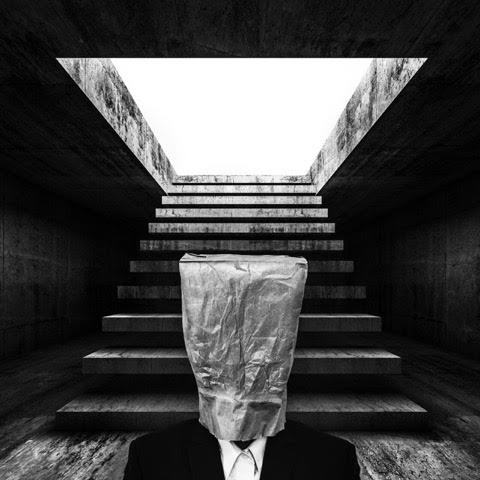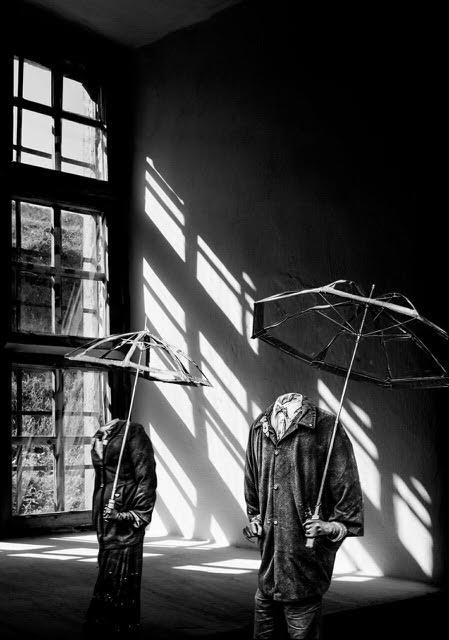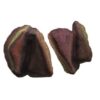By Maryam Roshanfekr
Translaletd by Behrad Sharifi
متن فارسی این نقد را اینجا بخوانید :
- ناگفتههایی از بازیگران اصلی دنیای هنر و هنرمندان موفق
- هنرمند/منتقد؛ هم این و هم آن
- مسعود اسکندری ؛ عکاس مهاجر
- نقدی بر نمایشگاه گمگشته| مانوش نبوی
‘Lost’ was held in Jorjani Gallery. An exhibition in which, mankind and his lost is taken into consideration. In this exhibition she has explored contemporary human condition. In her statement she speaks of lost as a plague for mankind, which in a world that mankind is getting further away from each other day by day due to technology, has affected her world.
Her photos are mostly black and white with some monochromes with high contrast. She is using photomontage technique by taking lots of photos and then adding them on each other as layers, final image which consist of a few or many photos together, features a strong expression.
Her works are strong in technique, with her background in portraiture and lighting, she produces precisely calculated images that has kept its visual power. In composition she is under influence by painters like Rene Margritte and Salvador Dali, and as she admits herself her image world is closed to surrealist artists, by taking the same approach can also be said that he relies on the psychological meaning. Having many layers on faces, unclear faces behind masks and separation of the constituent parts of the human subject that has no sex and personal identity.
She covers the faces with box, packet and mask or fades them to the point of being indistinguishable or thoroughly bondage them with clothe to emphasize on lost of identity in the shadow of mesmerized and dual culture of west. A culture with a decent appearance and mask like which has made mankind fragmented, silent and blind.
In most of her works she has made head and face as subject, which is the place for brain and reason and it is the most obvious sign of human identity and tries to warn in different ways and different contexts of verbal and visual sign about loosing it.
Even though her works are in black and white and formed with a critical view but it doesn’t consist of desperation, but rather it is a warning for her knowledge and definition of her understanding of world’s present situation. Dichotomy, hiding behind virtual identities and ultimately lost in the maze of virtual world, which has lured our individuality and us into a form of lifestyle that is destroying culture, humanity.
Nabavi’s work has formed in a nowhere space and her images are surrealistic and places are etheric. The presence of geometric structures without decorating, stairs and walls and their combination with headless and mesmerized creatures representing lost.
Her creatures are lost in space in a way that they don’t want to connect to it, climb the stairs and pass through the hatch or to have any awareness towards the environment in which they are. These boxes and packets and their heads can be a symbol of mobile phones that we spend a lot of time daily with it. A connection that separate us from the world and take us to a vortex that gradually we settle in it voluntary.
Nabavi’s works in from are representing a duality. Faces that frequently repeated in the works are located in the corners of frame as a witness with a definite and direct connection with out of focus faces. Even though these signs are sophisticated in image but in meaning it can be more of a slogan. Variety and possibility of observing the process and ability to change the angle of view in these images is her personal connection point to the exhibition.
Manoosh Nabavi was born in 1987, she’s graduated in photography, video and acting. Growing up in an artistic family to cinematographer parents she is an international award-wining photographer.
He usage of photographic images as a raw material and her knowledge in painting had a significant impact on the success of the exhibition.
She managed to change the position of photo from target to an instrument and produce a medium for creating work, which, can convey the concept and get result.
Her perspicuity narrows audience’s imagination in meaning but with the help of layered form and joining of lingual and visual signs leads audiences towards intuition.










